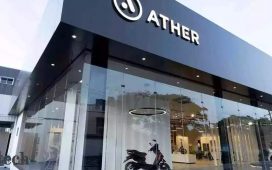Grand Junction City Council passed a revised set of transportation engineering design standards (TEDS) Wednesday designed to improve bicycle and pedestrian safety, which some developers say will raise development costs.
The vote followed about two hours of public comment.
“The updated TEDS addresses items identified through the planning and development process and recommended by the City’s Pedestrian and Bicycle Plan as a desired modernization of the required transportation standards in the Code,” a staff report to City Council stated. “The TEDS applies to all transportation improvements within the public right-of-way and all private work dedicated to the public, either as right-of-way or as an easement.”
Those changes include widening the requirements for sidewalks and buffers between streets and sidewalks in some areas, requiring more protected bike lanes, and narrower streets. Those requirements would be enforced for new development.
“The goal was to make it even more pedestrian and bike friendly,” said City of Grand Junction Engineering and Transportation Director Trent Prall.
Council voted 5-2 to approve the new standards, with Cody Kennedy and Dennis Simpson voting against.
Kennedy said he thought there could be a way to pass new standards that improve bike and pedestrian safety while also keeping costs down.
There could be subdivisions that don’t end up being developed because of the increased costs associated with TEDS, Kennedy said.
Simpson said he agreed with Kennedy.
Other Council Members touted the increase in bike and pedestrian safety offered by the new standards.
“I’ve lived in the Redlands the whole time I’ve been here, and all the problems with biking and all that stuff are the same now as they were in 1984 when I moved here,” Council Member Scott Beilfuss said. “So dang it, let’s get some of this stuff done.”
Council Member Jason Nguyen said adding car infrastructure costs more than adding bike and pedestrian infrastructure, and any increase in costs associated with improving things for cyclists and pedestrians isn’t worth under-serving those users.
Council Member Abe Herman noted much of the conversation about affordability centered around single-family homes, which typically aren’t a path to affordability.
Increasing bike and pedestrian safety would help the city incentivize density, which would help affordability, Herman said.
Herman said the differences between communities that plan for density and communities that don’t were evident during a recent trip through China and Japan.
“If you want to see what it looks like when places develop without standards for what an urban center should look like, go to many communities in China, and tell me if that’s a place that you want to live” Herman said. “And on the flip side go to Japan, where it’s very pedestrian-centric, very bike-centric and you have a complete 180 in the quality of life these people enjoy, in the economic vitality of the places.”
Council Member Randall Reitz said he was happy with the TEDS process even though some of his favored parts had been watered down, and that he was fine with the compromise.
Prall said the development community has expressed some concerns about costs associated with the new standards. Some developers were on hand to discuss the changes during public comment.
Realtor Rebekah Scarrow said the local development community supported the bicycle and pedestrian plan, and is in favor of most of the new standards, but would like the city to keep the previous standards for street cross-sections in place.
“We believe we have arrived at a proposed compromise that will preserve the good work that has been done and the added flexibility that the new standards allow while taking a bit more time to mitigate some of the unintended financial consequences,” Scarrow said.
A group in support of the new standards also spoke during public comment.
“I’ve been an avid bike commuter for most of my adult life and it’s been really difficult to get around here,” Sarah Stokes said. “I am currently a non-traditional student and the cheapest way to get to campus is on a bicycle.”
Stokes described the pedestrian infrastructure in Grand Junction as “frustrating.”
“It’s imperative that we built the infrastructure to get people where they need to go, and easily,” Stokes said.











